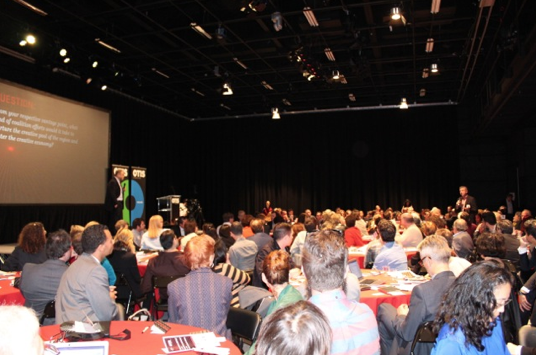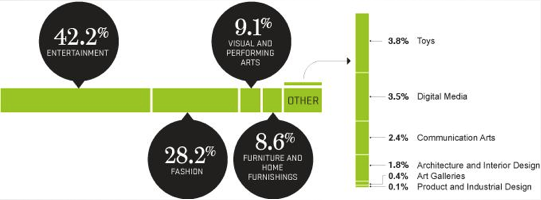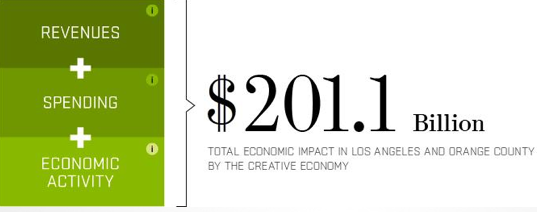By Adrienne Luce
Did you know a total of 664,000 jobs, 1 in every 8, are tied to Southern California’s creative economy?
Last week I attended the 6th annual Otis College Creative Economy Report event held at Google’s new YouTube Space LA—a state of the art digital production studio—in Playa Vista. The event brought together more than 200 leaders from corporations, creative enterprises, local government, education, non-profits, and philanthropy. After hearing about this year’s fundings, the participants shared their ideas about how to create cross-sector collaborations that can grow the region’s creative economy.

Six years ago, Samuel Hoi, the president of Otis College of Art and Design since July 2000, wanted to find a way to move beyond the argument of “art for art’s sake.” In order to convey the importance of the arts and the creative industries to a broader range of stakeholders including business leaders and policymakers, he wanted to measure and analyze the economic impact of the creative sectors in Southern California. As described in this year’s report, “Otis College of Art and Design commissioned the report to do the impossible: quantify creativity by analyzing the financial impact of creative industries and practitioners in the Los Angeles region. It puts real numbers to creativity.” In 2007, the first year of the report, the findings were compelling. As described in the report, “The data herein prove once and for all that creativity is the number one industry in Los Angeles and Orange Counties.”

According to the Los Angeles County Economic Development Corporation (LAEDC), from whom Otis commissions the report, the creative economy is the fourth largest industry cluster out of 66 in Los Angeles County. Driven by arts, design, and entertainment, the creative economy comprises 664,000 jobs and contributes more than $3.3 billion to state and local tax revenues. Projecting a 4.1% increase in creative jobs by 2016, the 2012 report emphasizes the need for civic engagement in support of the creative economy.

Chief Economist of the LAEDC Robert Kleinhenz presented the findings of the Otis report, and noted economist and author Ann Markusen presented national models and case studies of city strategies to stimulate and support the creative sector. Mark Lacter of “L.A. Biz Observed” led the guests in round-table discussions and brainstorming sessions focused on new directions and initiatives.
Watch the video:
Key takeaways:
1. The creative economy is important to the region’s economic growth and creativity is one of the region’s greatest economic assets
2. The creative economy supports 1 in 8 or 664,000 direct and indirect jobs in LA and Orange Counties and generates over $3.3 billion in state and local tax revenue
3. Our competitive advantage as a result of our creative economy can not and should not be taken for granted because it is being challenged by competing markets throughout the world
Call to action:
– We must invest in Southern California and actively incubate innovative practices
– We must invest in people, education is key to building a creative and skilled workforce
– We must make investments together as a coalition of drivers across sectors and everyone’s participation counts
